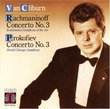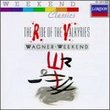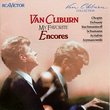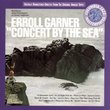| All Artists: Henze, Rattle, Birmingham Symphony Orchestra Title: Hans Werner Henze: Barcarola per grande orchestra / Symphony No. 7 Members Wishing: 1 Total Copies: 0 Label: EMI Classics Release Date: 2/27/2001 Genre: Classical Styles: Historical Periods, Modern, 20th, & 21st Century, Symphonies Number of Discs: 1 SwapaCD Credits: 1 UPC: 077775476224 |
Search - Henze, Rattle, Birmingham Symphony Orchestra :: Hans Werner Henze: Barcarola per grande orchestra / Symphony No. 7
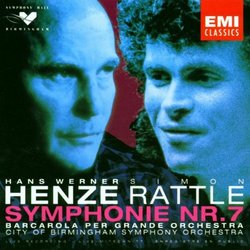 | Henze, Rattle, Birmingham Symphony Orchestra Hans Werner Henze: Barcarola per grande orchestra / Symphony No. 7 Genre: Classical
|
Larger Image |
CD DetailsSimilarly Requested CDs
|
CD ReviewsA fierce apocalyptic vision R. Hutchinson | a world ruled by fossil fuels and fossil minds | 05/31/2005 (5 out of 5 stars) "Henze's 7th Symphony is a fierce, tragic work, "...a German symphony, and it deals with matters German," according to the composer. The superb performance and recording was on May 25, 1992 at the acoustically magnificent Symphony Hall in Birmingham, with Simon Rattle leading the City of Birmingham Symphony Orchestra. Rattle of course has since gone on to take over the Berlin Philharmonic from Claudio Abbado, and Henze's 7th was commissioned by the Berlin Philharmonic for its centenary in 1982. It is based more closely on classical models, using the sonata form, and Beethoven in particular, than any of his many previous works. (Henze is incredibly prolific, though little-known in the U.S.) It is a rich and powerful work, which contrasts tonal elements and classical form with "free tonality," as Henze puts it, producing an emphatically modern work which nonetheless resonates with the expectations of a listener with ears trained in the classical symphonic form. The subject matter is horrifying, focusing overtly on the torment of Friedrich Holderlin in an asylum, and covertly on the Nazis, the will to power, and the dark side of the German experience. Henze describes the fourth movement, based on Holderlin's poem "Half of Life," as "a final apocalyptic vision of a cold and speechless world devoid of human life." Also included is another powerful work, the 21-minute "Barcarola for grand orchestra" from 1979, which Henze suggests might tell the tale of a dying man crossing the River Styx, or alternatively Odysseus travelling through a stormy night and arriving in Ithaca. Henze was born in 1926, and so was of the "Darmstadt" generation along with Boulez, Ligeti, Xenakis, Nono, and Berio. While he utilized serial techniques, Henze moved in the direction of the classical tradition fairly early, and turned to opera as one of his main forms of expression. Henze also embraced the New Left of 1968, and his radical socio-political views clearly inform his Symphony No. 7. Who among us could tell in the late 1970s/early 1980s when these works were composed that the world would veer far to the right, moving ever closer to fascism rather than moving in the direction of our New Left utopian vision? Well, some of us, like William Blake, "will not cease from mental fight...'til we have built Jerusalem, in Earth's green and pleasant land." A note to EMI's art department -- why are Henze and Rattle's heads blue? EMI has the worst art department in all of classical music. The only EMI covers worth looking at are the old ones redone in the Classics series, like the great William Blake cover for Furtwangler's Beethoven Symphony No. 9 at Bayreuth. (Now, in 2009, EMI has reissued this great recording along with Henze's Symphony No. 9, which is "Dedicated to the heroes and martyrs of German anti-fascism.")" As Big as Beethoven! Michel Bouton | Schenectady, NY | 12/12/2002 (5 out of 5 stars) "In 1982, Hans Werner Henze was commissioned by the Berlin Philharmonic to write a symphony to celebrate it's centenary. He decided to write it based "most closely on classical models", complete with sonata form. It is indeed the most "Beethoven like", of all his symphonies, if you compare size and nothing else. His works are not for the faint of heart, writing primarily with serial/atonal technics and none of the "big tunes" that you're used to hearing in romantic and post-romantic works such as Beethoven. This music is most rewarding for modernists...getting better and more understanding with each play. The filler, the 20 minute "Barcarola per grande orchestra", is even better! These are both incredibly profond works. If you like late Schoenberg and Stravinsky, you will indeed agree."
|

 Track Listings (5) - Disc #1
Track Listings (5) - Disc #1